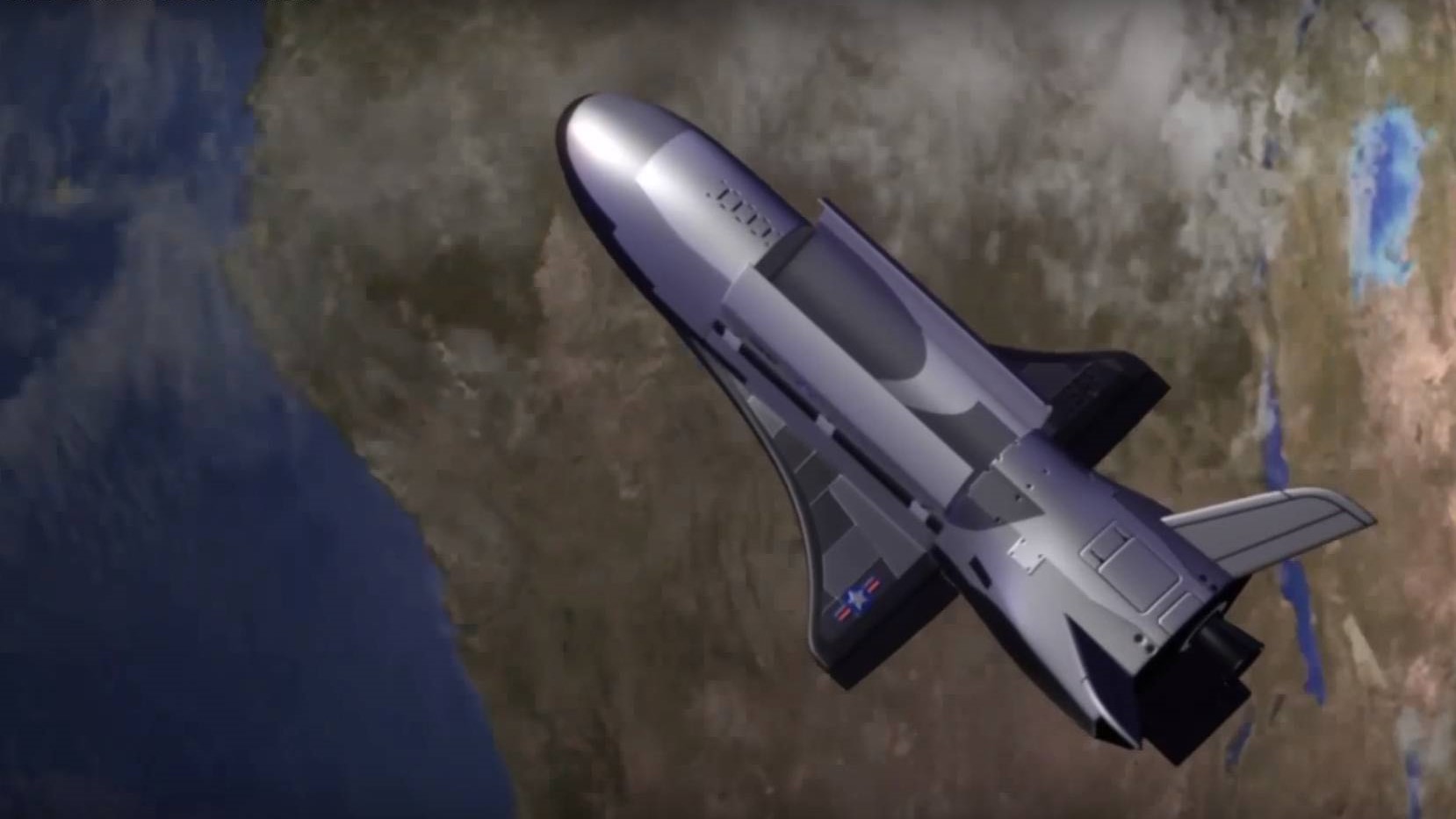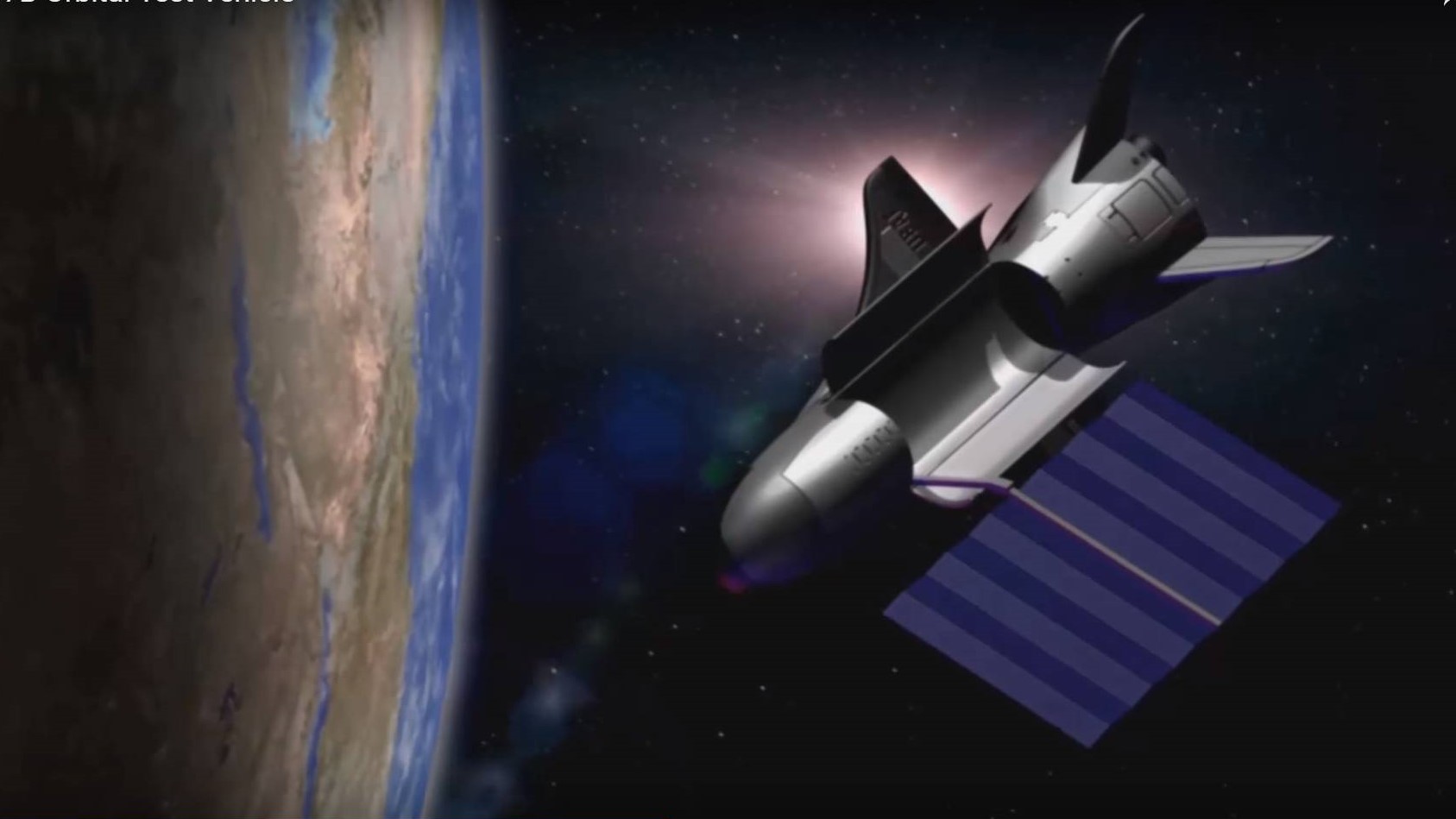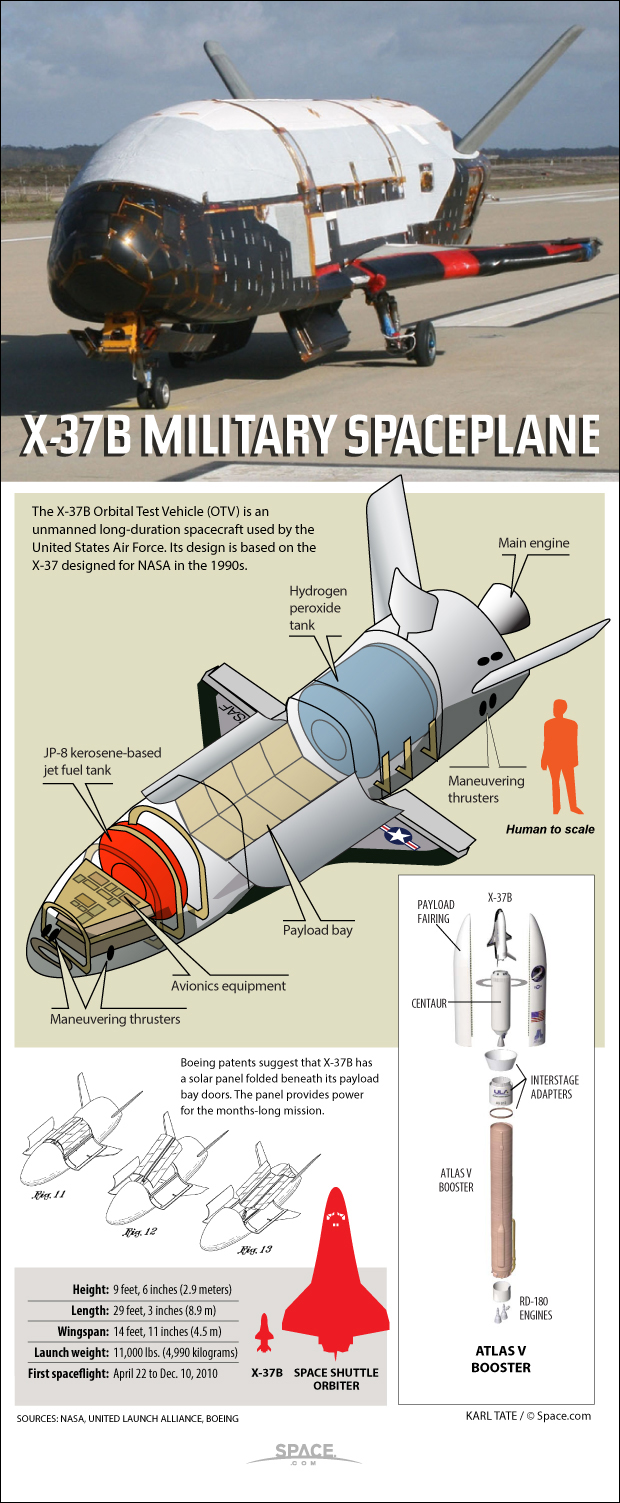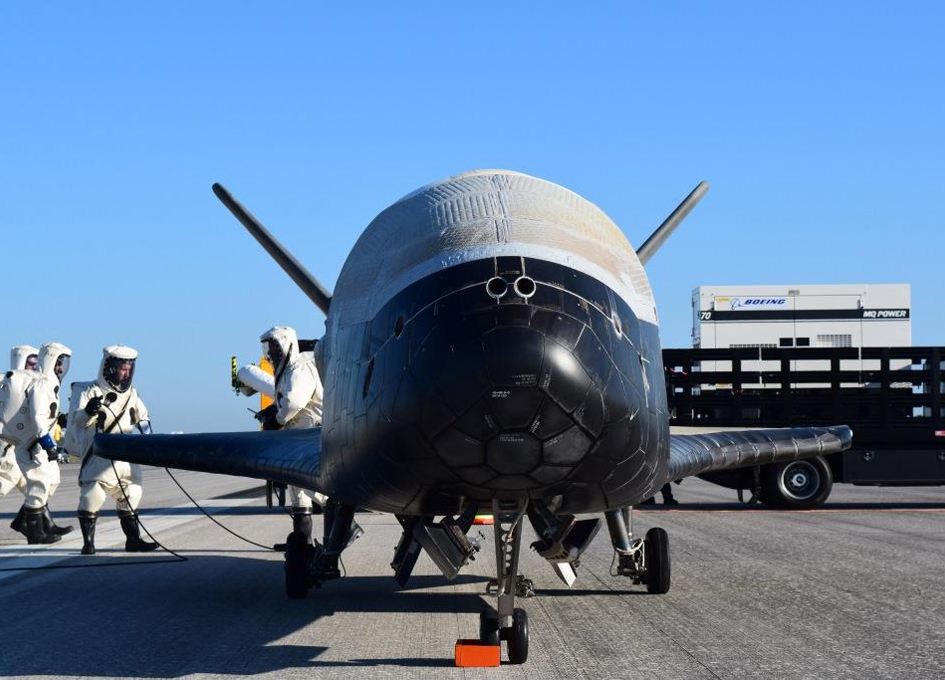
Secretive X-37B Military Space Plane Wings Past 200 Days in Orbit

The U.S. Air Force's X-37B space plane has winged past 200 days in orbit on its latest clandestine mission.
That mission, known as Orbital Test Vehicle-5 (OTV-5), began Sept. 7, 2017, when the robotic spacecraft launched atop a SpaceX Falcon 9 booster from NASA's Kennedy Space Center (KSC) in Florida.
According to Air Force officials, one payload flying on OTV-5 is the Advanced Structurally Embedded Thermal Spreader, or ASETS-11, of the U.S. Air Force Research Laboratory (AFRL). This cargo is testing experimental electronics and oscillating heat pipes for long durations in the space environment. [The X-37B Space Plane: 6 Surprising Facts]

Dual-use tech
"The X-37B has been and remains a technology demonstrator," said Joan Johnson-Freese, a professor in the National Security Affairs Department at the Naval War College in Newport, Rhode Island.
"Given that most space technology is dual-use, with the ever-increasing sway toward warfare in space, it's likely that the more militaristic uses of the space plane will be pursued more vigorously, and likely openly given the [presidential] administration's proclivity toward chest thumping," she told Space.com, expressing her personal view.
How long the unpiloted, reusable craft will stay aloft is not known, but experts have said it's likely to land at KSC's Shuttle Landing Facility, as the OTV-4 mission did back on May 7, 2017. That was a first for the program, as all prior missions had ended with a tarmac touchdown at Vandenberg Air Force Base in California.
Milestone missions

Each X-37B mission has set a new flight-duration record for the program.
Get the Space.com Newsletter
Breaking space news, the latest updates on rocket launches, skywatching events and more!
OTV-1 began April 22, 2010, and concluded on Dec. 3, 2010, after 224 days in orbit.
The second OTV mission began March 5, 2011, and concluded on June 16, 2012, after 468 days on orbit.
OTV-3 chalked up nearly 675 days in orbit before finally coming down on Oct. 17, 2014.
And OTV-4 conducted on-orbit experiments for 718 days during its mission, extending the total number of days spent in space for the OTV program to 2,085 days.
Risk-reduction role
The Air Force Rapid Capabilities Office manages the X-37B project, using it to perform risk-reduction, experimentation and concept-of-operations development for reusable space-vehicle technologies.
The space drone has a payload bay about the size of a pickup-truck bed, which can be outfitted with a robotic arm. X-37B has a launch weight of 11,000 lbs. (4,990 kilograms) and is powered on orbit by gallium-arsenide solar cells with lithium-ion batteries.
The classified X-37B program "fleet" consists of two known reusable vehicles, both of which were built by Boeing. Looking like a miniature version of NASA's now-retired space shuttle orbiter, the military space plane is 29 feet (8.8 meters) long and 9.6 feet (2.9 m) tall, with a wingspan of nearly 15 feet (4.6 m).

Trail gone cold
"There were indications that OTV-5 went to a significantly higher-inclination orbit than previous OTV missions," he told Space.com. "There was too little information to narrowly constrain a search."
Molczan said he assisted in one fruitless search, but it was of the roughly 44-degree-inclination orbit implied by the OTV-5 launch's "Notice to Airmen," the routine report put out to warn any aircraft pilots who may be near the flight path.
"The final orbit may be more like 60 degrees," he said. "If an object is not found within days or a few weeks of launch, then the trail goes cold and discovery depends on a chance sighting."
Leonard David is author of "Mars: Our Future on the Red Planet," published by National Geographic. The book is a companion to the National Geographic Channel series "Mars." A longtime writer for Space.com, David has been reporting on the space industry for more than five decades. Follow us @Spacedotcom, Facebook or Google+. Originally published on Space.com.
Join our Space Forums to keep talking space on the latest missions, night sky and more! And if you have a news tip, correction or comment, let us know at: community@space.com.

Leonard David is an award-winning space journalist who has been reporting on space activities for more than 50 years. Currently writing as Space.com's Space Insider Columnist among his other projects, Leonard has authored numerous books on space exploration, Mars missions and more, with his latest being "Moon Rush: The New Space Race" published in 2019 by National Geographic. He also wrote "Mars: Our Future on the Red Planet" released in 2016 by National Geographic. Leonard has served as a correspondent for SpaceNews, Scientific American and Aerospace America for the AIAA. He has received many awards, including the first Ordway Award for Sustained Excellence in Spaceflight History in 2015 at the AAS Wernher von Braun Memorial Symposium. You can find out Leonard's latest project at his website and on Twitter.









